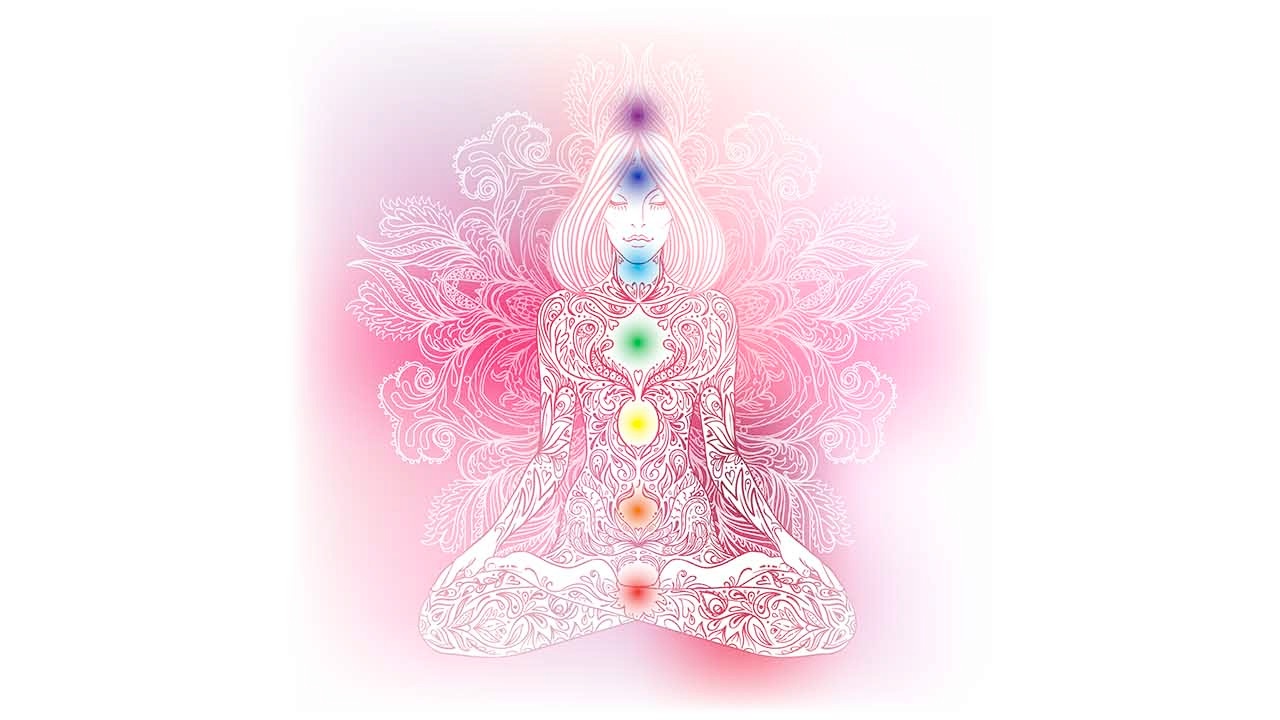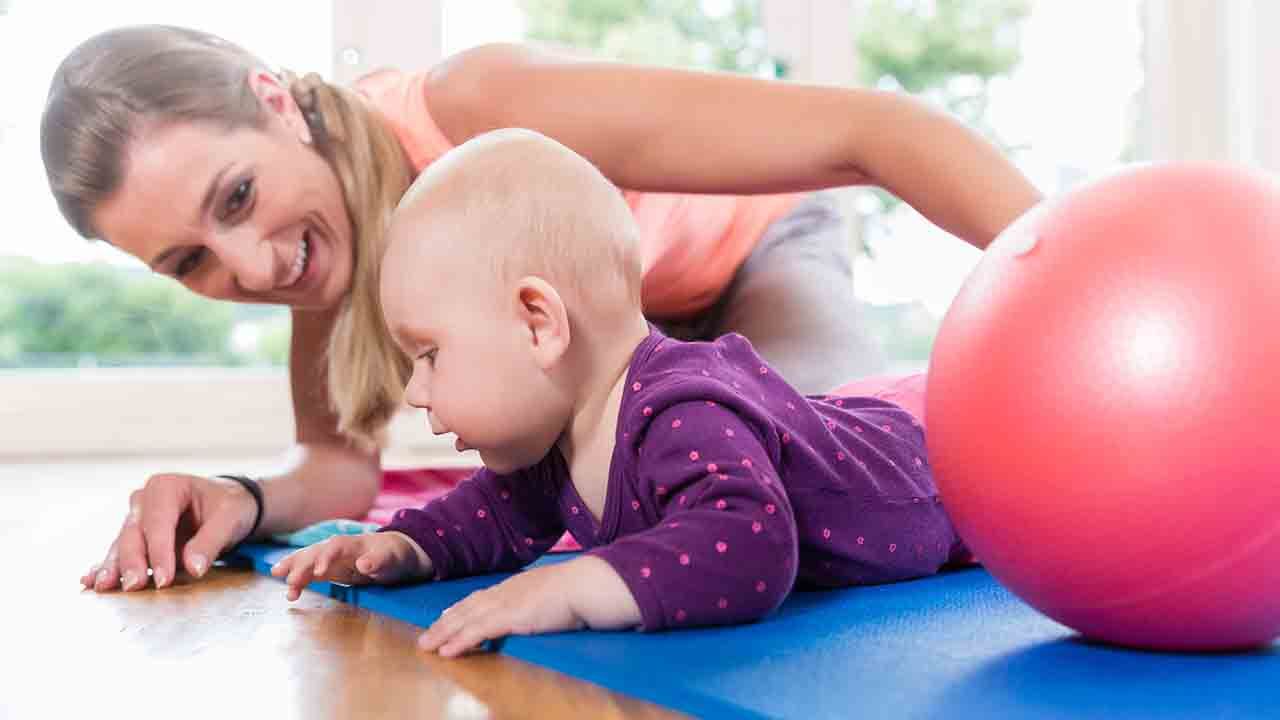A Beginner's Guide To Chakras

The concept of chakras and chakra healing can sound incredibly strange and possibly even a little daunting if you're new to yoga philosophy, but they are actually an important part of the ancient Ayurveda health system and have been used to holistically treat individuals for thousands of years.
What are chakras?
The 7 main chakras are energy centres located at specific points in line with the spine, starting at the base and finishing at the crown of the top of the head. In Sanskrit, the word 'chakra' translates to disc or wheel, and if you were visualising one it would be a spinning disc of energy.
Each chakra corresponds to nerve-rich areas of the body and/or major organs that are also said to hold our emotions, thoughts, feelings and psychological traumas. It's important these chakras stay open and aligned so that energy, or prana, flows smoothly. If we get blockages energy is unable to flow, or if the energy speeds up/slows down it can also cause problems that can lead to system imbalance and disease.
For example, think of your chakras like a drain pipe; if it's clear water will flow through easily. If it gets blocked or the flow slows down the water may become stagnant and mould may grow. They may also spin too fast and become overactive.
As mind, body and spirit are all considered to be connected, psychological events, emotions and feelings may manifest physically. Therefore if you do activities that address the corresponding chakra there is potential to remove the blockage. An example if this - if you were constantly feeling fearful of the future and had difficulty concentrating, you might do a physical yoga practice focusing on Muladhara and grounding.
Here's an overview of the chakras and how they relate to our mind and physical body. The first three are associated with our physical body, the fourth (Anahata) is the connection between the physical and spiritual, and the final three chakras are associated with the spirit.

Muladhara (Root Chakra)
Location: Base of the spine (perineum, first three vertebrae, colon and bladder)
Colour: Red
Associated with: Security, stability, a sense of grounding, our primal basic needs. The nose and sense of smell. The element earth.
If it's out of balance: We feel ungrounded, afraid, angry, a sense of loss of identity, or may have self-esteem issues. This may manifest in poor sleep, tiredness, obesity, constipation, eating disorders, sciatica or lower back pain.
When it's in balance: We feel safe, secure, in control, independent and stable.
Balance it by: Yoga poses where we can feel stable connection with the ground (standing, seated or lying down) such as Warrior I/II/III, Svasana and Tadasana. Connect with nature - walk barefoot on the grass or sand, swim in the sea, go for a bush walk. Eat nourishing whole foods.
Svadhisthana (Sacral Chakra)
Location: The pelvis (above the pubic bone and below the navel)
Colour: Orange
Associated with: Our sexuality, reproduction and creativity. The tongue and sense of taste. The element water.
If it's out of balance: We may experience irritability, shyness, guilt, blame and generally feel uninspired and unenthusiastic. This may manifest in pelvic pain, sciatica, lower back pain, poor digestion, hormonal imbalances, menstrual or hormonal issues, sacroiliac joint issues, or a loss of libido.
When it's in balance: We feel safe, secure, compassionate, friendly, intuitive, sexy, content, fun and stable. We feel inspired and may be more inclined to engage in creative/artistic activities.
Balance it by: Pelvic movements and hip opening yoga poses such as figure-8 hip circles, badha konasana or pigeon pose/eka pada rajakapotasana. Being around water; go for a seaside walk, have a swim in the ocean or river, take a bath.
Manipura (Solar Plexus)
Location: The belly (from the navel to the breastbone)
Colour: Yellow
Associated with: Recognition, identity and power. The eyes and sense of sight. The element fire.
If it's out of balance: We may experience jealousy, fear, foolishness, indecisiveness, envy, delusion or disgust. It can manifest in stomach ulcers, digestive issues, low blood pressure, colon diseases and pancreatic issues.
When it's in balance: We have good gut instinct, feel decisive, have good digestion, mental focus, feel energetic and confident.
Balance it by: Yoga poses that create space in this area or stimulate it such as back bends and core work; surya namaskar, setu bandha sarvangasana, navasana or dhanurasana.
Anahata (Heart Chakra)
Location: The heart/chest
Colour: Green or Pink
Associated with: Ability to love and connect. The skin, hands and sense of touch. The element air.
If it's out of balance: We may feel closed off to the world, have difficulty loving or accepting love, lack of compassion, lack of confidence, sadness, fear, envy, jealousy, clinginess, neediness or anger. This may manifest in health issues such as asthma, heart conditions, upper back and shoulder problems, breathing issues.
When it's in balance: We are open to opportunities, we feel loved and secure, compassionate, empathetic, friendly, motivated, outgoing, nurturing and we feel complete.
Balance it by: Heart opening yoga poses that create space at the front of the chest such as anahatasana, cobra/bhujangasana or cow face/gomukhasana. Random acts of kindness and gifting. Self-nourishment, gratitude and self-love.
Vishuddhi (Throat Chakra)
Location: The throat
Colour: Blue
Associated with: Our ability to express ourselves verbally, communication. The ears and sense of hearing. The element of ether.
If it's out of balance: We may have difficulty speaking up, have a hard time expressing ourselves, be self-critical or trouble with assertiveness. This could also manifest in stiff neck, thyroid issues, mouth ulcers, gum and tooth problems, swollen glands or sore throats.
When it's in balance: We find it easy to express ourselves, feel calm, clearly communicate, and may feel creative.
Balance it by: Mantra/chanting/singing. Journal thoughts, feelings and emotions. Be open to listening and communicating.
Ajni (Third Eye)
Location: The third eye (between the eyebrows)
Colour: Purple
Associated with: Intuition and balanced energy. The pineal gland/third eye.
If it's out of balance: We may feel confused, lack discipline, have difficulty concentrating or be fearful of the truth. This could manifest in migraines, headaches, nightmares, learning disabilities, nightmares or eye strain.
When it's in balance: We feel our mind is clear, we are aware, intuitive, imaginative and focused.
Balance it by: Meditating, yoga poses where there is pressure or focus to the third eye such as child's pose with forehead on the floor. Neck rolls, chanting/singing (as voice resonates in the headspace) and deep breathing exercises. Inversions such as handstands, forward fold/uttanasana or downward dog. Having a technology detox, and being around nature.
Sahasarara (Crown Chakra)
Location: Above the crown of the head
Colour: White or violet
Associated with: Nirvana/moksha/liberation, the realisation of a higher truth. The pineal and pituitary glands, sensory intuition.
If it's out of balance: We may experience the feeling of a loss of identity, disbelief in any spirituality, fanaticism, a lack of purpose, distrust, fear or selfishness. This may also manifest in sensitivity to sound and light, chronic fatigue.
When it's in balance: We feel open minded, calm, happy, connected, whole and aware.
Balance it by: Meditating, balance yoga poses where calmness is required to stay in the pose such as tree/vrksasana or eagle/garudasana, self-nourishment through healthy lifestyle choices, other physical activities that require balance.
Please note: This is information based on traditional holistic methodologies. If you are experiencing any health issues please see an experienced professional such as a yoga therapist, doctor or specialist regarding treatment.
Images / DepositPhotos









